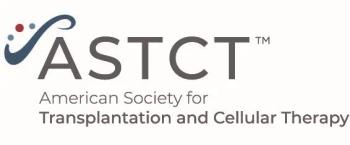
Eltrombopag Improved Platelet Counts in Thrombocytopenic MDS Patients
The use of the thrombopoietin receptor agonist eltrombopag was clinically effective at raising platelet counts in patients with lower-risk myelodysplastic syndromes with severe thrombocytopenia.
The use of the thrombopoietin receptor agonist eltrombopag was clinically effective at raising platelet counts in patients with lower-risk myelodysplastic syndromes (MDS) with severe thrombocytopenia, according to the results of a single-blind, phase II superiority trial
“We observed clinically significant responses in nearly half of the eltrombopag recipients at a median of 2 weeks, and the 50 mg dose required to obtain a response was similar to that previously reported for patients with severe aplastic anemia,” wrote Esther N. Oliva, MD, Azienda Ospedaliera Bianchi-Melacrino-Morelli, Reggio Calabria, Italy, and colleagues.
According to the study, about 10% of patients with low-risk MDS have thrombocytopenia, and this condition is associated with a higher risk for bleeding and can affect patient survival.
Oliva and colleagues designed this trial to assess if eltrombopag could safely increase platelet counts in patients with low-risk MDS and severe thrombocytopenia. The trial was designed with two parts: phase I to determine efficacy and safety, and phase II to assess long-term response and safety.
Phase I of the trial included 90 patients with low-risk or intermediate-1-risk MDS and severe thrombocytopenia. Patients were randomly assigned 2:1 to eltrombopag 50–300 mg or placebo for at least 24 weeks and until disease progression. For this first phase of the trial, the primary endpoints were safety and the proportion of patients achieving a platelet response within 24 weeks.
With a median follow-up of 11 weeks, about one-half (47%) of patients assigned eltrombopag had platelet responses compared with only one patient (3%) in the placebo group (odds ratio, 27.1; 95% CI, 3.5–211.9; P = .0017).
“Our finding underlines the potential benefits of eltrombopag in patients with low-risk MDS not requiring red blood cell transfusions,” the researchers wrote. “Increasing platelet counts were accompanied by improvements in many patient-reported outcomes, as captured by the quality-of-life questionnaires.”
Twenty-one patients had at least one severe bleeding event during follow-up. However, there were more patients with bleeding events in the placebo group compared with the eltrombopag group (42% vs 14%; P = .0025).
Safety assessments showed 52 grade 3/4 adverse events occurred in 27 of 59 (46%) of patients assigned to eltrombopag compared with only nine events in 5 of 31 patients (16%) in the placebo group. Eight patients assigned eltrombopag required treatment discontinuation because of persistent drug-related toxicity; however, no treatment-related deaths were reported.
Twelve percent of patient assigned to eltrombopag evolved to acute myeloid leukemia or had disease progression compared with 16% of patients assigned placebo (P = .81).
“When taking into account patient and disease factors, the effect of eltrombopag was strongly correlated only with hemoglobin concentrations, possibly indicating an association with less severe MDS,” the researchers wrote. “In fact, low hemoglobin concentrations conferred a worse prognosis in MDS and identified patients with a higher risk of progression or evolution, thus suggesting more advanced disease. Thus, the interaction between hemoglobin and platelet response to eltrombopag needs further investigation.”
Newsletter
Stay up to date on recent advances in the multidisciplinary approach to cancer.

















































































